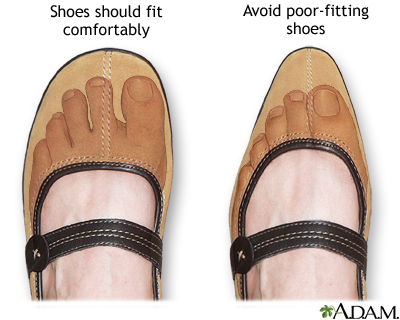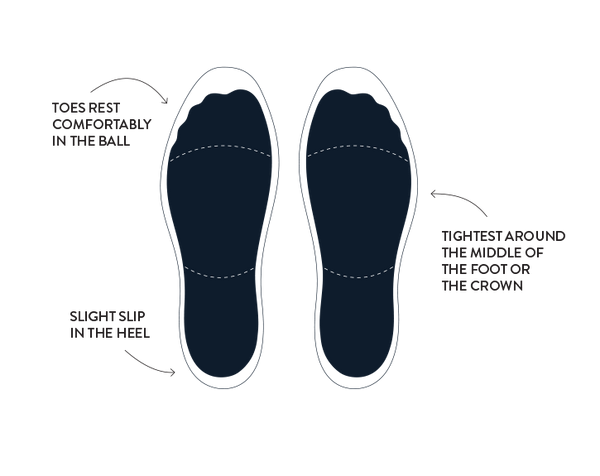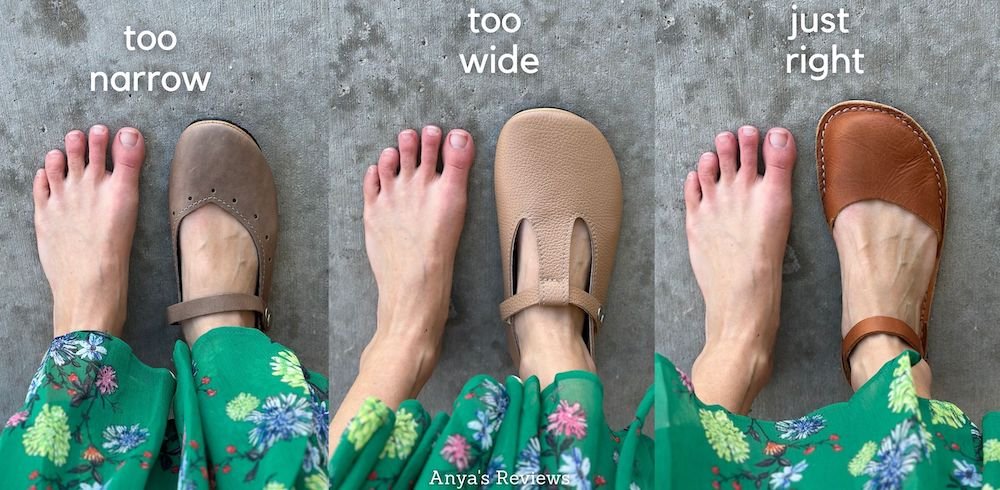Understanding Shoe Fit
The Importance of the Right Fit
A well-fitted shoe can enhance your overall health, improve your performance in sports, and elevate your style. Conversely, poorly fitting shoes can lead to a variety of issues ranging from blisters and calluses to long-term problems like bunions and plantar fasciitis.
The Anatomy of Shoe Fit
Shoes should fit snugly without causing discomfort. The key areas to consider include the toes, arch, and heel.
- Toes: Your toes should have enough room to wiggle. A good rule of thumb is to have about a thumb’s width of space from your longest toe to the end of the shoe.
- Arch: The arch should be supported but not overly compressed. This varies depending on your foot type—high, medium, or low arch.
- Heel: Your heel should fit snugly in place without slipping. This ensures proper support and alignment.
How Tight Should Different Types of Shoes Fit?
Athletic Shoes

Firm but Flexible
Athletic shoes should provide a firm fit without being constricting. For running shoes, consider the following:
- Fit Type: Snug in the midfoot to prevent slippage.
- Toes: At least a thumb’s width of space at the front.
- Heel: A secure fit that doesn’t allow for unnecessary movement.
Casual Shoes

Comfort and Versatility
Casual shoes like loafers or sneakers should excel in comfort. Your toes should have enough room to move, but the overall fit should be secure.
Comparison Table: Athletic vs. Casual Shoe Fit
| Aspect | Athletic Shoes | Casual Shoes |
|---|---|---|
| Toe Space | 1 thumb width | 0.5-1 thumb width |
| Arch Support | Moderate to High | Low to Moderate |
| Heel Fit | Secure with slight movement | Slightly loose but secure |

Dress Shoes
A Balancing Act
Dress shoes generally require a tighter fit than casual shoes but should still allow for a degree of movement.
- Fit Type: Tailored but comfortable.
- Toe Box: Should not pinch your toes; opt for a more rounded toe if needed.
- Arch: Light support is important, especially for loafers and oxfords.

Real-World Footwear Experiences
Case Study 1: The Runner’s Dilemma
When Sarah started running marathons, she often experienced foot pain. After consulting with a specialist, she discovered her shoes were too loose, causing her feet to slide. Switching to a snugger pair improved her performance and eliminated discomfort.

Case Study 2: The Fashionista’s Choice
Mark, a fashion editor, often found himself torn between style and comfort in dress shoes. By exploring different brands, he settled on a brand known for its quality materials that provide a perfect balance, allowing him to look sharp without sacrificing comfort.
Tips for Finding the Perfect Fit

Measure Your Feet Regularly
Foot size can change due to various factors such as weight gain, age, or pregnancy. Make it a habit to measure your feet at least once a year.
Try Shoes on Later in the Day
Our feet naturally swell throughout the day. Trying on shoes in the afternoon or evening ensures a more accurate fit.

Walk Around the Store
Always walk around the store to assess comfort. If you’re considering athletic shoes, try jogging a few steps to mimic how you’ll use them.
Consider Your Sock Thickness
If you usually wear thick socks, consider this when purchasing shoes.

Fit for the Activity
Always consider the activity the shoe is intended for. Athletic shoes for running will fit differently than dress shoes meant for office wear.
Product Highlights
Top Running Shoes for a Perfect Fit
Nike Air Zoom Pegasus 38
- Fit: Snug in the midfoot, spacious toe box.
- Pros: Great for long distances, breathable material.
- Cons: May be too narrow for wider feet.
Adidas Ultraboost 21
- Fit: Slightly tighter upper, excellent arch support.
- Pros: Comfort and responsiveness.
- Cons: Higher price point.
Best Casual Shoes
Vans Old Skool
- Fit: Snug but allows for some toe movement.
- Pros: Versatile, timeless design.
- Cons: May not provide enough support for all-day wear.
Allbirds Wool Runners
- Fit: Soft with a broader toe box.
- Pros: Eco-friendly, machine washable.
- Cons: Limited arch support.
Pros and Cons of Footwear Fit
Pros of a Proper Fit
- Enhanced comfort
- Reduced risk of foot ailments
- Improved performance in athletic activities
- Aesthetic appeal in fashion footwear
Cons of an Improper Fit
- Potential for blisters and calluses
- Increased likelihood of injuries
- Long-term foot problems
- Unpleasant wearing experience
Frequently Asked Questions
1. What are the signs that my shoes are too tight?
Signs include pain, numbness, or tingling in your toes, blisters, and difficulty moving your toes.
2. How do I know if my shoes are too loose?
If your heel slips, you feel instability, or there’s excessive movement in the shoe, it may be too loose.
3. Should I size up for thicker socks?
Yes, if you plan on wearing thicker socks, consider going up half a size for comfort.
4. How often should I replace my shoes?
Typically, running shoes should be replaced every 300-500 miles, while casual shoes may last longer depending on wear and tear.
5. Can shoe size change with age?
Yes, foot size can change as you age due to natural wear and change in foot structure.
6. Are there any specific brands known for better fit?
Brands like New Balance, Nike, and Clarks are often praised for their fit and comfort across various styles.
7. What is the best time of day to buy shoes?
It’s best to shop in the late afternoon when your feet are slightly swollen—I mean, it’s natural!
8. Are there special considerations for high-arch or flat feet?
Yes, those with high arches should look for shoes with good arch support, while flat feet may benefit from motion control shoes.
9. Should mothers-to-be consider different shoe sizes?
Absolutely! Foot size can increase during pregnancy, so it’s wise for expectant mothers to ensure they’re getting the right fit.
Conclusion
Finding the right shoe fit is an essential aspect to enhance your health and style. With knowledge of how tight your shoes should be and proper guidance on fit, you can make informed choices that align with your lifestyle needs. Remember to always consider the specific activity, the time of day you’re shopping, and the thickness of socks you typically wear. By understanding your unique foot shape and needs, you will be equipped to choose footwear that provides both comfort and style.
For additional reading on foot health and the importance of shoe fit, consider reviewing resources from the American Podiatric Medical Association here, or you can explore the scientific literature on foot anatomy and fitting guidelines from NIH Research.
By following this guide, you’ll be well on your way to making the best footwear choices, ensuring that your shoes fit perfectly and allow you to walk, run, or simply stand in style. Happy shoe shopping!